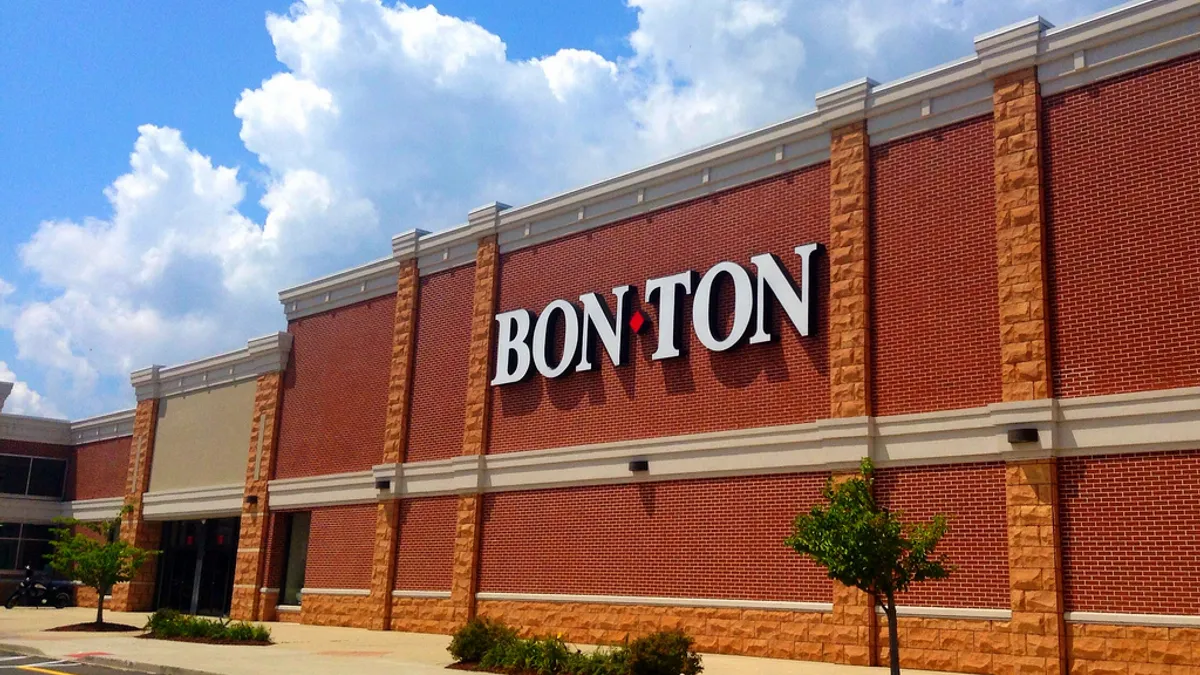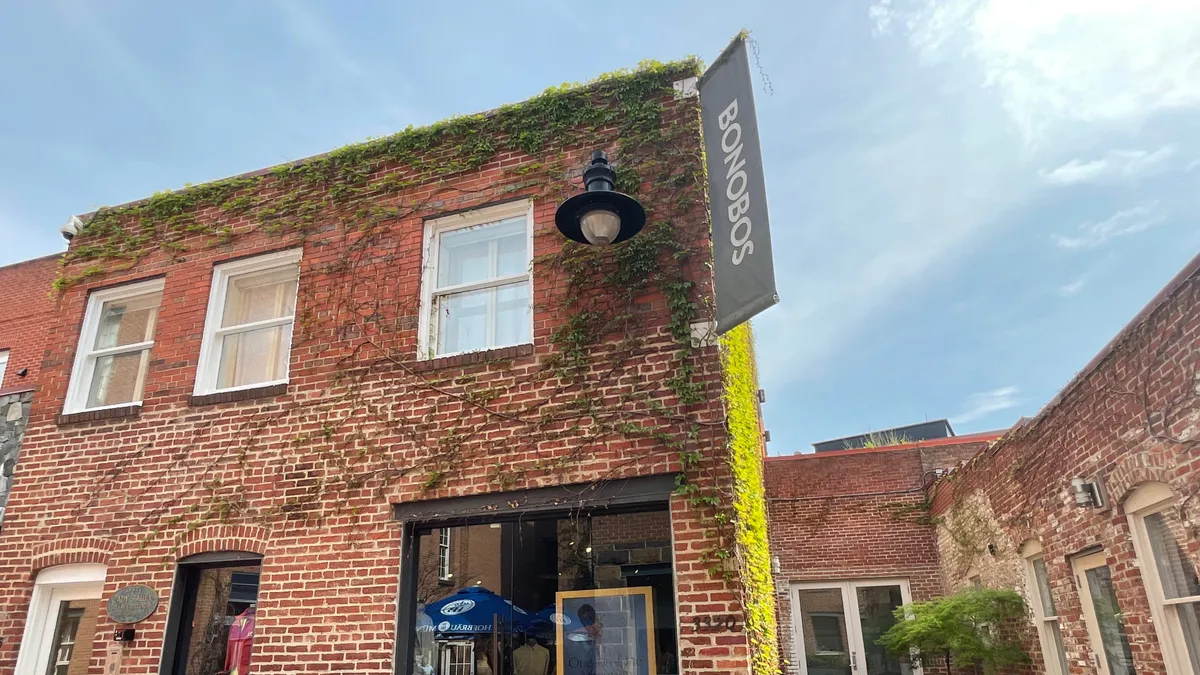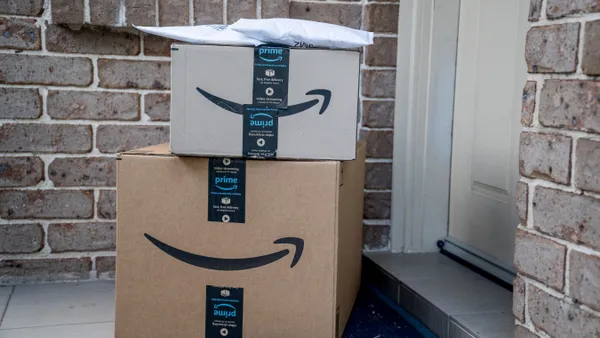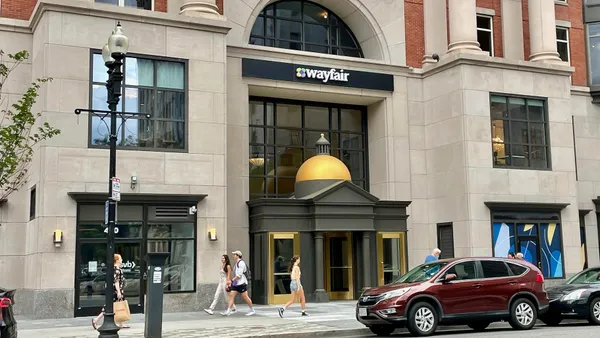Dive Brief:
- In an echo of the weeks leading up to the Toys R Us bankruptcy, some suppliers are scaling back shipments to Bon-Ton and asking for stricter payment terms, Bloomberg reported last week, citing unnamed sources.
- According to the news service, some suppliers have demanded letters of credit or cash on delivery of shipments in fear that the department store retailer’s turnaround plans might fail. The company did not reply to a request for comment from Retail Dive, but a spokesperson told Bloomberg: "We maintain constructive relationships with our vendors. Our team has been working closely with all of our vendors, large and small, as we build inventory ahead of the holiday season."
- In September, Debtwire reported that financial firm CIT had reduced its factoring exposure to Bon-Ton, forcing some suppliers to work with the retailer directly rather than meet CIT’s stricter terms for shipments to Bon-Ton, according to a story emailed to Retail Dive.
Dive Insight:
Toys R Us was perhaps the most dramatic illustration in years of just how financially damaging a supplier pullback can be.
The toy retailer had plenty of debt, but many analysts put the reckoning a couple of years out. Then, after news that Toys R Us had hired restructuring advisers broke, suppliers quickly worked to limit their financial exposure to the company.
According to court statements, 40% of the retailer's suppliers refused to ship products without cash-on-delivery payments, cash in advance or even in some cases payment of all outstanding obligations. Toys R Us CEO David Brandon said in a court filing that this created an immediate and sudden need for an extra $1 billion in liquidity — which it did not have. It filed for Chapter 11 protection soon after. (Children's apparel retailer Gymboree also faced a supplier squeeze in the months leading up to its bankruptcy.)
Bon-Ton’s story, so far, has played out similarly. In September, it was reported to have hired AlixPartners for help with its turnaround efforts. Now, media are reporting that suppliers are having trouble financing their shipments to the retailer and are scaling back or asking for better financial terms.
Bon-Ton’s top-line sales have been falling since 2007, and the retailer hasn’t posted a positive profit since 2010, according to regulatory filings. Comparable sales for Bon-Ton have been negative for the past nine quarters, according to an August report from Moody’s. In Q1 of this year, comparable sales fell by 8.8% — the worst among its department store peers with the exception of Sears, according to Moody’s. In the second quarter, comps fell by 6.1%.
As Philip Emma, a retail analyst with Debtwire, pointed out in an October report emailed to Retail Dive, Bon-Ton had been able to cut overhead to improve margins in the face of declining sales, but "there is a finite level of costs that can be taken out of a retailer without having a serious impact on the ability to reverse a traffic decline."
Ultimately, though, even larger concerns loom over the retailer. "[T]he longer-term question remains as to the viability of its business model beyond just limping along at a slow, steady rate of decline," Emma wrote.
Emma also pointed out that vendor and factoring issues, should they spiral into a liquidity crunch, pose a bankruptcy risk to Bon-Ton, even as it maintains excess credit for its business (in the form of $171 million in borrowing capacity under a revolving credit facility). But he also writes that Bon-Ton can avoid bankruptcy "if it can maintain vendor support and start to generate some earnings improvement in 2018."














